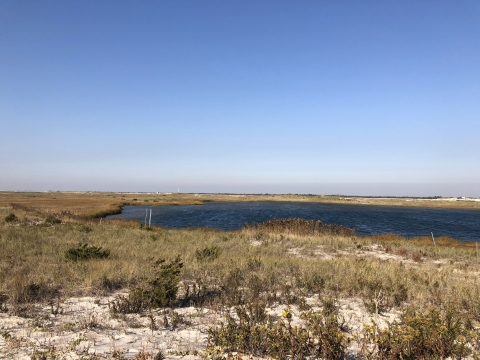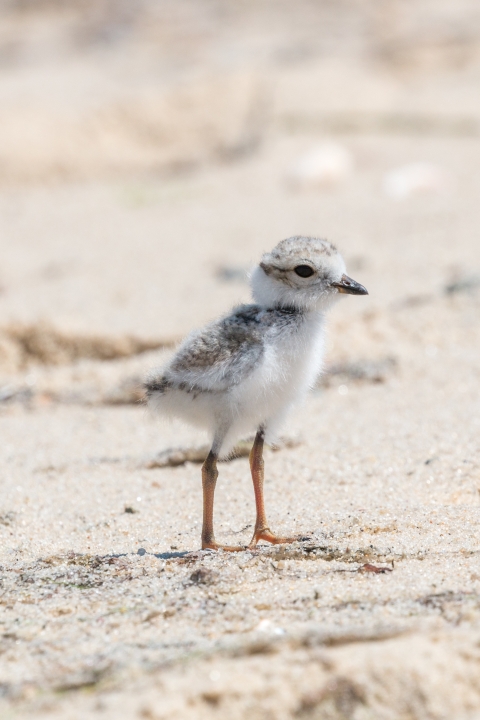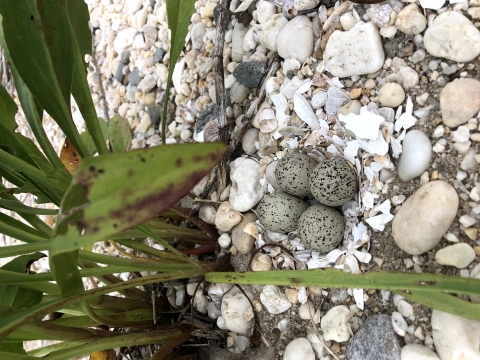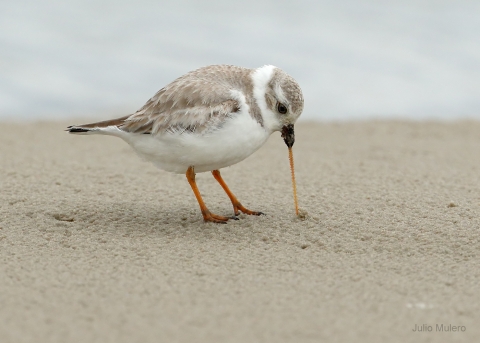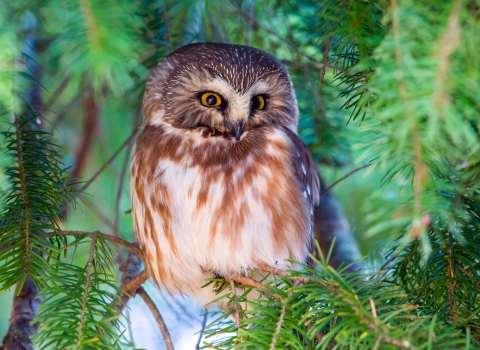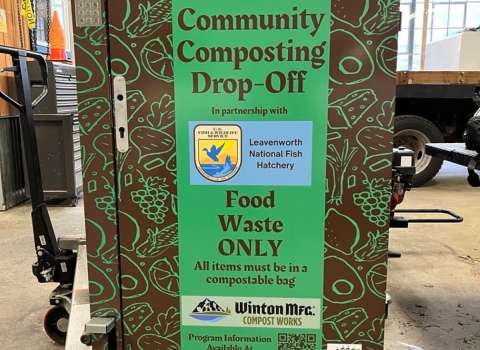This past winter dramatic changes have been made to the landscape at Democrat Point at the western end of Robert Moses State Park. The tip of the island looks as if a huge storm blew through - dunes completely flattened into a huge expanse of sand, stretching right up to ocean. This landscape may seem uninviting for animals, but to a unique shorebird species, this is the exact environment needed to thrive.
During the beaches’ off-season the Army Corp of Engineers, with guidance from the Long Island Field Office, has been hard at work modifying Democrat Point. This section of beach has been designated by the Corps for habitat creation for the piping plover in order to mitigate the loss of habitat for the species due to the Corps’ Fire Island Inlet to Montauk Point Coastal Storm Risk Management Project. After many months, this work has culminated with a new section of habitat for the piping plover, opening space for new pairs to forage and nest.
Grassy dunes are important for some species, but for birds like the piping plover, large swathes of sand like this are a dream come true. Plovers, like many shorebirds, thrive in early successional habitat. We may consider this landscape to be barren, but wide beaches like this provide plovers with tons of foraging habitat, as they search for small invertebrates on the beach. These little meals help them replenish their energy from their long journey from the south and prepare them for mating season on these very shores. Not only can the adults forage here, but they can nest here too, making a small depression in the sand, and sometimes filling it with small bits of shell and rock, creating a delicate spot to lay their eggs. They nest out in the open, relying on their camouflage to avoid predators.
Once the chicks hatch, there is enough space at Democrat Point to allow for adult and young to forage side by side. Plover chicks begin foraging for themselves within 24 hours after hatching, but they still need help! Their parents stay with them on guard duty, luring potential predators away until the baby piping plovers are big enough to fledge in the late summer and early fall.
In order to help this new habitat become a safe space for piping plovers, we need your help!
What can you do to maximize the positive effects of any habitat for piping plovers?
- Give the plovers lots of space! - respect fenced off areas, and any birds you see foraging in the intertidal zone. Piping plover chicks are precocial, meaning they are out of the nest feeding all by themselves only a day after hatching, but they can’t fly away yet! They need space to forage safely on the beach and along the wrack line.
- Check the rules and regulations of any beach you visit - many places have different rules about what you can and can’t do on the beach.
- Furry friends are best on leashes - an unleashed dog can scare away plovers from foraging or nesting habitat, or even hurt them.
- Take a walk! - walking instead of driving on the beach is good exercise and keeps plovers and other shorebirds safe from cars. Tiny plover chicks can try to hide in the deep grooves tires leave in the sand - leaving them exposed and in a dangerous spot when the next vehicle comes around!
- Remember to clean up after yourself - food and litter can attract predators like racoons and foxes. They come for litter but stay to predate on plover chicks! You can help prevent this by taking your trash with you when you leave the beach.
Thank you for your continued partnership in sharing the shore and keeping our beaches safe for piping plovers.
Want to learn more about Long Island piping plovers?
Follow this link for a video: Virginia Tech Fire Island Shorebird Team: plover banding
Follow this link for a storymap: People Behind the Plovers


